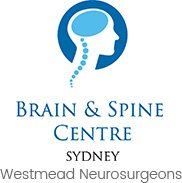Trigeminal Neuralgia
Facial pain can occur due to an injury or infection of any facial structure such as the eyes, nose, sinuses, teeth and jaw. It may also be experienced when you have a disorder called trigeminal neuralgia (TN), which affects the trigeminal nerve that carries facial sensations such as pain, pressure and temperature to the brain.
In trigeminal neuralgia, the myelin sheath, a protective sheath that insulates the nerve is worn off by the constant rubbing against a blood vessel, tumour, lesion or other abnormalities, disrupting nerve functions. Aging and other neurological disorders that affect the myelin sheath can also produce trigeminal neuralgia.
Trigeminal neuralgia is characterised by a sharp shooting pain, usually felt on one side of the jaw, which can last for several seconds, and can be brought on by simple actions such as touching your face, chewing, brushing your teeth or even a cool breeze. Initially, you may experience mild attacks of pain but as the condition progresses, the episodes become more painful and longer lasting.
When you present with symptoms of trigeminal neuralgia, your doctor will review your symptoms and perform a thorough physical examination. Diagnosis is usually based on your description of the pain: type, location and its triggers. A neurological examination may be conducted to determine the location and cause of the pain and examine the trigeminal nerve and its branches. An imaging study such as an MRI may be ordered to identify a tumour or other causes for your pain.
Trigeminal neuralgia is initially treated with medications such as anticonvulsants, muscle relaxants, anti-seizure or antidepressant drugs, which may control symptoms by blocking pain signals. If these are ineffective or produce intolerable side effects, glycerol may be injected at the root of the nerve, a catheter-guided balloon may be inserted, or mild electric current may be passed through a needle to damage the nerve. Invasive treatment involves either surgically decompressing the trigeminal nerve by shifting or removing the compressing blood vessels or damaging parts of the trigeminal nerve to reduce the sensation of pain. This can be achieved by various procedures such as microsurgery and radiosurgery.




